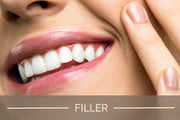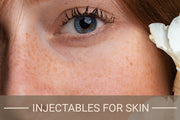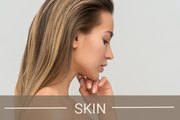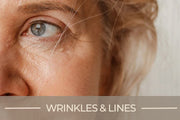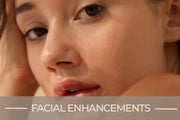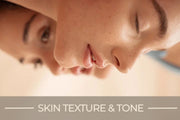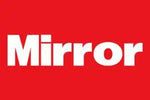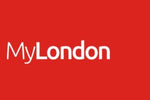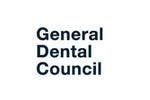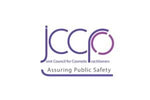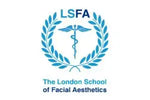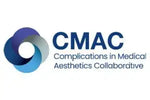Best Candidates for Botox Anti-wrinkle Treatments
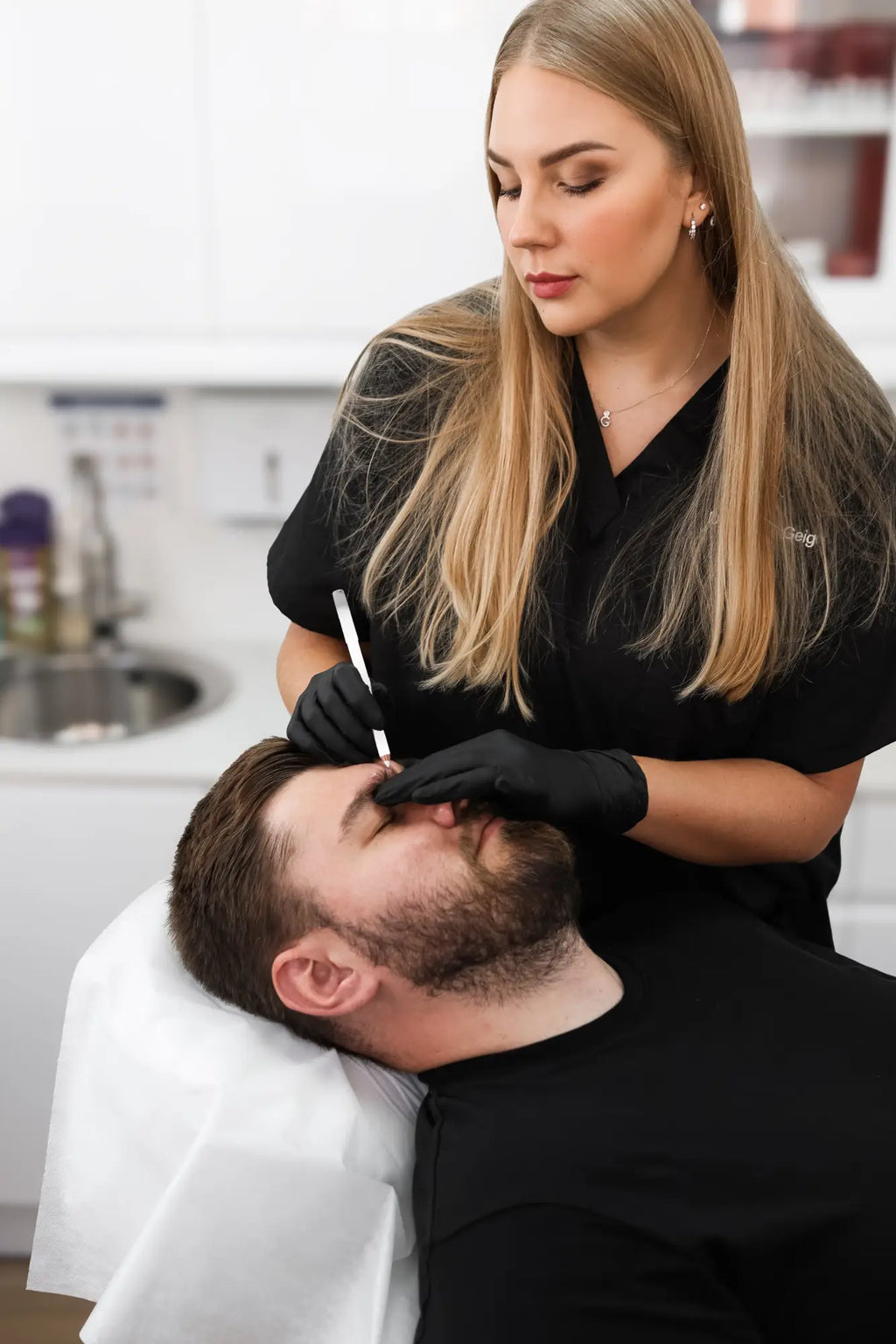
Content Verification
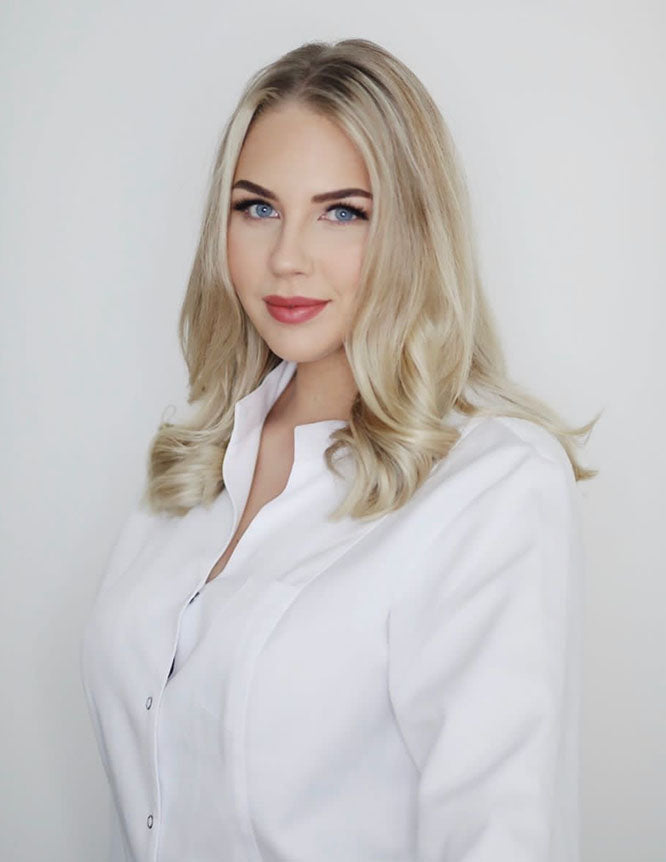


✨ Summary of Key Points ✨
- 💉 Botox works best for those with mild to moderate wrinkles looking for a fresher, smoother appearance.
- 🔄 It’s ideal for individuals aged 25–65 who want to prevent or reduce fine lines.
- 🚫 Not suitable for pregnant or breastfeeding women, or those with certain medical conditions.
💡 Key Advice and Tips from Our Experts 💡
- 📅 First time? Start small and consult an expert to find the right dosage for your needs.
- 🤓 Consistency is key! Regular treatments every 3–4 months help maintain results.
- 🚰 Stay hydrated and avoid alcohol 24 hours before treatment for the best outcome.
Botox treatments have become one of the most sought-after anti-wrinkle solutions, helping individuals achieve a more youthful and refreshed appearance. By temporarily relaxing facial muscles, Botox anti-wrinkle injections effectively reduce fine lines and prevent deeper wrinkles from forming. However, not everyone is an ideal candidate for this treatment, and understanding suitability is crucial for achieving safe and effective results.
In this article, we’ll explore who benefits most from Botox for wrinkles, when to consider treatment, and key factors that determine eligibility. With expert insights from leading professionals, including Dr. Laura Geige, Dr. Snieguole Geige, and Dr. Giedre Narkiene, we’ll provide medically accurate information to help you make an informed decision.
By the end of this guide, you’ll understand whether Botox anti-ageing treatments are right for you and what to expect from the process. If you’re considering Botox treatments in London or searching for Botox near me, this article will provide the essential knowledge you need before booking a consultation.
Understanding Botox Anti-Wrinkle Treatments
Botox anti-wrinkle treatments have gained widespread popularity for their ability to reduce fine lines and wrinkles. However, many people are unaware of how Botox injections actually work, the science behind their effectiveness, and the common misconceptions surrounding them.
How Botox Anti-Wrinkle Injections Work
Botox anti-wrinkle injections contain a purified protein derived from Clostridium botulinum, which temporarily reduces muscle activity. It works by blocking nerve signals to targeted muscles, preventing excessive contractions that cause dynamic wrinkles—those that appear with facial expressions like smiling, frowning, or squinting.
These injections are administered in small, precise doses by qualified professionals. The goal is not to freeze facial expressions but to soften lines while maintaining a natural look. The treatment is commonly used to address areas such as forehead lines, crow’s feet, and frown lines.
The Science Behind Botox for Wrinkles – Relaxing Facial Muscles
Wrinkles form due to repeated muscle movements and the gradual breakdown of collagen and elastin in the skin. Botox anti-wrinkle injections temporarily relax these muscles, reducing the depth of existing lines and preventing new ones from forming.
The effects develop gradually over 3 to 7 days, with full results visible within two weeks. Since Botox only affects the targeted muscles, untreated areas of the face remain unaffected, allowing for natural facial expressions.
Common Misconceptions about Botox Anti-Ageing Treatments
There are several myths surrounding Botox anti-ageing treatments, including:
- “Botox completely freezes your face” – When administered correctly, Botox allows for natural facial expressions while softening lines.
- “Botox is only for older individuals” – Preventative Botox is becoming increasingly popular among younger adults who want to slow the development of deep wrinkles.
- “Once you start, you can’t stop” – Stopping Botox does not worsen wrinkles; rather, they gradually return to their previous appearance as the effects wear off.
- “Botox and dermal fillers are the same” – While both address signs of ageing, Botox injections relax muscles, whereas fillers restore lost volume.
Understanding these differences helps individuals make informed decisions about Botox treatments without relying on misinformation.
Duration of Results and Maintenance Treatments
The effects of Botox for wrinkles typically last 3 to 4 months, depending on factors such as metabolism, lifestyle, and muscle strength. Over time, the treated muscles regain movement, and lines may gradually reappear.
Regular maintenance treatments can help prolong the benefits of Botox. Some individuals notice that with consistent use, they require lower doses or less frequent treatments. Consulting a qualified professional ensures that Botox treatments are tailored to individual needs while maintaining a natural, refreshed appearance.
Who Are the Best Candidates for Botox?
Not everyone is suitable for Botox anti-wrinkle treatments, and understanding the ideal candidate profile is essential for achieving the best results. While Botox is commonly associated with reducing visible wrinkles, it is also used preventatively to slow the formation of fine lines. The treatment works best when tailored to individual skin types, concerns, and aesthetic goals.
General Criteria for Suitability
Individuals with Dynamic Wrinkles (Expression Lines)
Dynamic wrinkles are caused by repeated facial expressions, such as frowning, smiling, or squinting. Over time, these lines can become more pronounced, especially in areas like the forehead, between the eyebrows, and around the eyes. Botox for wrinkles works best for individuals experiencing these early signs of ageing, as it helps to smooth and soften expression lines before they deepen.
Dr. Laura Geige, Medical Director and Skin Expert from It’s Me & You Clinic, explains: "The best candidates for Botox are those with dynamic wrinkles that appear when they move their face. Treating these lines early can prevent them from becoming deeply etched into the skin, making future treatments more effective. The key is to maintain a natural appearance while softening the effects of repeated muscle movements."
As Botox does not work on static wrinkles—those that remain visible even when the face is at rest—individuals with deep-set lines may require alternative or complementary treatments, such as dermal fillers or skin resurfacing procedures.
People Looking for Preventive Botox Treatments
Many individuals now consider Botox anti-ageing treatments as a preventive measure rather than waiting for wrinkles to become prominent. Preventative Botox is typically sought by individuals in their mid-to-late 20s or early 30s who wish to slow the development of deep facial lines.
Dr. Giedre Narkiene, Dermatology Specialist, states: "Preventative Botox can be beneficial for younger individuals who are noticing the first signs of fine lines. By targeting specific muscles before wrinkles become permanent, we can help maintain smoother skin for longer. However, it’s important that patients understand Botox is a temporary solution, and long-term skincare habits are just as crucial."
Incorporating a proper skincare routine, including sun protection and hydration, can further enhance the benefits of Botox and delay the need for more invasive procedures in the future.
Those with Realistic Expectations and a Commitment to Maintenance
Botox offers noticeable yet subtle results, and the best candidates are those who have realistic expectations about what the treatment can achieve. It does not stop the ageing process but rather minimises the appearance of wrinkles for a period of time.
Additionally, Botox is not a one-time solution. The effects wear off gradually over 3 to 4 months, meaning individuals who want to maintain their results must be willing to undergo regular treatments. Those seeking a permanent fix may need to explore alternative procedures.
How Botox Treatments in London Are Tailored to Different Skin Types and Concerns
Every patient’s facial anatomy and skin condition are unique, which is why Botox treatments in London are customised based on individual needs. Factors such as muscle strength, skin elasticity, and personal aesthetic goals influence the dosage and injection technique.
Clinics specialising in Botox treatments carefully assess each patient’s facial structure to ensure a balanced and natural-looking outcome. For individuals with sensitive or mature skin, a lower dosage may be recommended to prevent an overly “frozen” appearance. Similarly, those with stronger facial muscles—such as men—may require higher doses to achieve optimal results.
What Is the Best Age to Start Botox?
The right time to start Botox anti-wrinkle treatments varies from person to person, depending on genetics, lifestyle, and skin type. While some individuals seek Botox as a corrective treatment for visible wrinkles, others opt for preventative Botox to slow the development of fine lines. Understanding the ideal age for Botox can help individuals make an informed decision about when to consider treatment.
Preventative Botox: Ideal Starting Age
Preventative Botox has become increasingly popular among individuals in their mid-to-late 20s and early 30s who want to stop wrinkles before they form. The idea behind preventative Botox is that early intervention can reduce the need for more aggressive treatments later in life.
By targeting dynamic wrinkles (those caused by repeated facial movements), Botox injections help relax specific muscles before lines become deeply etched into the skin. This can be particularly beneficial for people with expressive faces or those genetically predisposed to early wrinkle formation.
However, starting Botox too early without clear signs of wrinkle development may not be necessary. The decision should always be based on a professional assessment of skin condition, rather than age alone.
When Wrinkles Become Prominent and Need Treatment
For many individuals, the early to mid-30s is when fine lines start to become noticeable. Factors such as sun exposure, smoking, and genetics can influence the rate at which wrinkles appear.
Common signs that Botox may be beneficial include:
- Faint lines that remain visible even when the face is at rest (particularly on the forehead or around the eyes).
- Repeated squinting or frowning leading to deepening lines over time.
- Makeup settling into fine lines, making them more noticeable.
Dr. Snieguole Geige, Dentist and Medical Doctor, explains: "Botox works best when used proactively rather than reactively. Individuals in their 30s who notice early signs of fine lines can benefit from low-dose Botox to prevent these wrinkles from becoming permanent. However, waiting until deeper lines have formed means Botox alone may not be enough, and additional treatments like fillers or resurfacing may be needed."
For individuals who have already developed static wrinkles (those visible even when the face is relaxed), Botox can still soften their appearance, but it may not erase them entirely.
Recommendations on Age-Related Botox Effectiveness
Age is not the only factor that determines whether Botox anti-ageing treatments will be effective. The condition of the skin, muscle strength, and lifestyle habits all play significant roles in how well Botox works and how long its effects last.
- In the 20s to early 30s → Botox is most effective as a preventative measure, delaying the formation of deep lines.
- In the mid-30s to 40s → Botox helps to reduce the appearance of existing wrinkles, particularly dynamic ones.
- In the 50s and beyond → Botox can still be effective, but it may need to be combined with other treatments, such as fillers or skin tightening procedures, for optimal results.
What Are the Top 3 Areas for Botox?
Botox anti-wrinkle injections are most commonly used to target areas where wrinkles are formed due to repeated facial expressions. While Botox can be applied in various parts of the face, three areas are particularly popular for achieving a smoother and more youthful appearance. These include forehead lines, frown lines (glabellar lines), and crow’s feet. Treating these areas can result in a refreshed yet natural look, enhancing overall facial aesthetics.
Forehead Lines
Forehead lines are one of the most common reasons individuals seek Botox for wrinkles. These horizontal lines develop due to repeated raising of the eyebrows, often becoming more noticeable with age.
- Botox works by relaxing the frontalis muscle, reducing excessive movement that causes these lines.
- The goal is to smooth wrinkles while maintaining some natural expression, avoiding an over-treated or frozen look.
- Results typically appear within 3 to 7 days, with full effects visible at two weeks.
Treating forehead lines with Botox anti-ageing treatments can help individuals achieve a more rested and youthful appearance without invasive procedures.
Frown Lines (Glabellar Lines)
Frown lines, also known as glabellar lines, are the vertical wrinkles that form between the eyebrows due to repeated frowning or squinting. These lines can make individuals appear tired, angry, or stressed even when their face is at rest.
- Botox injections temporarily relax the corrugator and procerus muscles, preventing deep creases from becoming more prominent.
- Softening these lines can help create a calmer, more approachable facial expression.
- Regular treatments can train the muscles to contract less forcefully, potentially reducing the frequency of treatments over time.
Since frown lines are often among the first noticeable signs of ageing, Botox anti-wrinkle injections in this area are a popular choice for both men and women.
Crow’s Feet (Wrinkles around the Eyes)
Crow’s feet are the fine lines that develop at the outer corners of the eyes, typically due to smiling, squinting, or sun exposure. These lines can deepen over time, making the eyes appear older.
- Botox for wrinkles in this area works by relaxing the orbicularis oculi muscle, which is responsible for eye movement.
- The result is a softening of fine lines, while still allowing for natural facial expressions.
- Many individuals find that treating crow’s feet brightens their overall appearance, making them look more refreshed.
Since the skin around the eyes is delicate, it’s essential for Botox to be administered by an experienced professional to ensure a subtle and natural outcome.
The Aesthetic Benefits of Botox in These Areas
Botox is not just about wrinkle reduction—it plays a significant role in enhancing facial aesthetics by creating a more balanced and harmonious appearance.
Elisabeth Leclerc, Fashion Expert, explains: "Facial expressions are a key part of personal style, and deep lines in certain areas can unintentionally project emotions such as stress or fatigue. When Botox is used strategically on the forehead, between the eyebrows, and around the eyes, it can subtly enhance one’s appearance while maintaining natural movement. A well-done treatment doesn’t erase personality; it refines it."
By targeting key areas with Botox, individuals can achieve a rejuvenated yet natural look, ensuring that their facial expressions remain authentic and expressive.
Who Is Not Suitable for Botox Treatments?
While Botox anti-wrinkle treatments are widely used to reduce fine lines and prevent the formation of deep wrinkles, they are not suitable for everyone. Certain medical conditions, unrealistic expectations, and potential allergies can make some individuals ineligible for Botox injections. Understanding these factors is crucial to ensuring both safety and satisfactory results.
Individuals with Certain Medical Conditions
Some pre-existing health conditions can make Botox unsuitable or even unsafe. Individuals with the following conditions should consult a medical professional before considering Botox anti-ageing treatments:
- Neuromuscular disorders, such as Myasthenia Gravis or Lambert-Eaton Syndrome, as Botox affects nerve signals and could worsen symptoms.
- Bleeding disorders, which may increase the risk of bruising or complications after injections.
- Severe muscle weakness in the treatment area, as further muscle relaxation may lead to undesirable effects.
- Active skin infections at the injection site, which could increase the risk of complications.
In some cases, alternative treatments may be more suitable, and a consultation with a qualified practitioner is essential to assess individual health risks.
Those with Unrealistic Expectations about Results
While Botox for wrinkles can effectively reduce the appearance of fine lines, it is not a miracle cure for ageing. The best candidates for Botox treatments understand that:
- Botox does not stop ageing, but it helps to slow down the formation of wrinkles.
- The results are temporary, typically lasting 3 to 4 months before a repeat treatment is needed.
- Botox cannot lift sagging skin or add volume—these concerns may require alternative treatments, such as dermal fillers or skin-tightening procedures.
Dr. Rimas Geige, Medical Doctor and Registered Dietician, explains: "One of the key factors in determining suitability for Botox is a patient’s expectations. Those who expect dramatic or permanent changes may not be the best candidates. Botox is most effective when used as part of a long-term skincare and maintenance plan, rather than as a one-time fix."
For individuals looking for more comprehensive anti-ageing solutions, combining Botox with other aesthetic treatments may offer better results.
People with Allergies to Botox Components
Although rare, some individuals may be allergic to ingredients in Botox injections. It’s important to disclose any history of allergic reactions to botulinum toxin or its components, such as:
- Human albumin (a protein found in Botox formulations).
- Preservatives or additives used in Botox products.
Before undergoing Botox treatments in London or elsewhere, individuals with a history of severe allergies should discuss their medical history with a practitioner to assess potential risks.
Medical Considerations before Botox
Beyond medical conditions and allergies, certain temporary factors may also make Botox unsuitable at a given time, including:
- Pregnancy or breastfeeding (covered in the next section).
- Recent facial surgery or cosmetic procedures, which may require full healing before Botox can be safely administered.
- Medication use, particularly blood thinners, muscle relaxants, or certain antibiotics that may interact with Botox.
A thorough consultation with a qualified professional ensures that each individual is assessed for suitability before undergoing Botox anti-wrinkle treatments.
Can Pregnant or Breastfeeding Women Have Botox?
Many individuals considering Botox anti-wrinkle treatments wonder whether it is safe during pregnancy or while breastfeeding. While Botox is widely used for reducing fine lines and wrinkles, its use in pregnant and breastfeeding women is not recommended. Due to limited clinical research and potential unknown risks, medical professionals advise against undergoing Botox injections during these periods.
Why Botox Is Not Recommended During Pregnancy or Breastfeeding
Botox works by temporarily relaxing muscles through the use of botulinum toxin, a neurotoxin that blocks nerve signals. While Botox is considered safe for cosmetic use in general, its effects on a developing foetus or a nursing infant are not well understood.
- There is no conclusive evidence to confirm whether Botox can cross the placenta or be transmitted through breast milk.
- The potential impact of Botox on foetal development has not been extensively studied, leading to a precautionary approach.
- Regulatory bodies, including the Medicines and Healthcare products Regulatory Agency (MHRA) in the UK, do not recommend Botox during pregnancy or breastfeeding.
Without sufficient research, most medical experts advise against Botox anti-ageing treatments for those who are pregnant, planning to conceive, or currently nursing.
Medical Safety Guidelines and Lack of Research Data
While some medications and cosmetic procedures are deemed safe for pregnant and breastfeeding women, Botox does not fall into this category due to the absence of rigorous clinical trials.
- Pregnant women: The primary concern is that botulinum toxin could, in theory, affect the developing nervous system of a foetus.
- Breastfeeding women: Although Botox is injected locally and is unlikely to spread through the bloodstream in significant amounts, there is no data confirming whether it could be passed to an infant via breast milk.
For these reasons, most reputable clinics and medical professionals refuse to administer Botox to pregnant or breastfeeding patients as a precautionary measure.
When Can Botox Be Resumed?
- Women who have recently given birth should wait until they have finished breastfeeding before resuming Botox.
- If an individual is not breastfeeding, Botox can generally be restarted after full postpartum recovery, subject to a consultation with a qualified practitioner.
- A medical professional should always be consulted to determine the appropriate timeline for resuming Botox anti-wrinkle treatments safely.
Is Botox Effective for Both Men and Women?
Botox has long been associated with female beauty treatments, but Botox for wrinkles is increasingly popular among men as well. Both men and women seek Botox anti-ageing treatments to reduce fine lines, smooth facial expressions, and maintain a youthful appearance. However, there are key differences in how Botox is administered based on gender, including dosage, muscle structure, and treatment goals.
Rising Popularity of Botox for Wrinkles in Men
While women have traditionally been the primary recipients of Botox anti-wrinkle injections, there has been a significant rise in male patients over the past decade. More men are recognising the benefits of Botox in achieving a refreshed and well-rested appearance, particularly in professional and social settings.
- Many men opt for subtle wrinkle reduction rather than a completely smooth look.
- Botox is commonly used to soften frown lines, forehead wrinkles, and crow’s feet while maintaining natural facial expressions.
- The stigma around Botox for men has diminished, leading to greater acceptance of aesthetic treatments as part of self-care.
As more men explore non-invasive cosmetic treatments, clinics are tailoring Botox techniques to better suit male facial anatomy.
Key Differences in Male and Female Botox Treatments
While the goal of Botox anti-wrinkle treatments is similar for both genders, the approach varies due to differences in facial structure, muscle mass, and aesthetic preferences.
- Men typically have stronger facial muscles, requiring higher doses of Botox to achieve the same results as women.
- The shape of male and female brows differs, influencing injection placement. While women may prefer a subtle arch in the brows, men often aim for a flatter, more natural brow line.
- Men often prefer understated results, ensuring they maintain a masculine and expressive appearance rather than a “frozen” or overly smooth face.
Because of these anatomical and aesthetic variations, an experienced practitioner will customise Botox injections to align with the unique needs of male and female patients.
How Gender Affects Dosage and Treatment Approach
Due to muscle density and strength, men typically require higher Botox doses than women in areas like:
- Forehead lines – Men’s frontalis muscles are stronger, often requiring more Botox to soften deep-set wrinkles.
- Frown lines (glabellar lines) – These tend to be more pronounced in men due to repeated furrowing of the brows.
- Crow’s feet – Men with strong orbicularis oculi muscles may need slightly higher doses for optimal results.
A tailored approach ensures that Botox treatments in London and beyond are suitable for both genders, maintaining a natural yet youthful look.
At What Age Is Botox No Longer Effective?
Botox is widely used to reduce fine lines and wrinkles, but many individuals wonder if there is an age limit for its effectiveness. While Botox remains a viable option for most adults, its effectiveness can diminish depending on factors such as skin condition, muscle strength, and collagen loss. For older individuals, alternative or complementary treatments may be more suitable.
Can Botox Work for Older Individuals?
There is no strict age limit for Botox anti-wrinkle treatments, but its effectiveness depends on the condition of the skin rather than age alone. Botox works by relaxing muscles that cause dynamic wrinkles—those formed by repeated facial expressions. However, in mature skin, deeper static wrinkles (visible even when the face is at rest) may not respond as effectively to Botox alone.
- Individuals in their 50s, 60s, and beyond can still benefit from Botox, particularly for softening frown lines, forehead lines, and crow’s feet.
- Results may not be as dramatic as in younger individuals with more elastic skin, but regular treatments can still provide a refreshed appearance.
- The best approach for older individuals often involves combining Botox with other anti-ageing treatments to address loss of volume, sagging, and skin texture changes.
While Botox can still offer subtle wrinkle reduction, deeper facial ageing concerns may require additional cosmetic procedures.
Alternative Anti-Ageing Treatments for Mature Skin
For individuals who find that Botox for wrinkles is no longer as effective due to skin laxity and volume loss, there are other treatment options:
- Dermal fillers – Help restore lost volume in areas where skin has begun to sag.
- Skin resurfacing treatments – Such as chemical peels, laser therapy, or microneedling to improve skin texture and elasticity.
- Collagen-stimulating treatments – Including Profhilo or radiofrequency treatments to boost natural collagen production.
- Thread lifts or surgical options – For those seeking longer-term solutions to sagging skin and deep-set wrinkles.
By combining Botox anti-ageing treatments with other non-invasive procedures, older individuals can achieve more comprehensive and natural-looking results.
When to Consider Fillers or Other Cosmetic Procedures
Botox primarily relaxes muscles, but it does not restore lost volume or tighten loose skin. For individuals with deep wrinkles, sagging skin, or hollow areas, additional treatments such as dermal fillers may be needed.
- Fillers add volume to areas such as cheeks, nasolabial folds, and under-eye hollows.
- Profhilo and other collagen-stimulating injections can improve skin quality and hydration.
- Surgical procedures, such as facelifts or eyelid lifts, may be considered for long-term results when non-invasive treatments are no longer sufficient.
A tailored treatment plan, designed by a qualified professional, can help individuals determine whether Botox treatments in London or other procedures are best suited to their needs.
Can Botox Be Combined with Other Treatments Like Fillers?
While Botox anti-wrinkle treatments effectively reduce fine lines and dynamic wrinkles, they do not address all aspects of facial ageing. Many individuals seek combination treatments to achieve a more balanced and rejuvenated appearance. One of the most popular pairings is Botox and dermal fillers, as they work in complementary ways to address different signs of ageing. This approach is often referred to as a "liquid facelift."
Complementary Treatments for Enhanced Results
Since Botox injections target muscle movement, they are ideal for treating expression lines like forehead wrinkles, frown lines, and crow’s feet. However, Botox does not restore lost volume, which is where dermal fillers come in.
- Botox softens lines caused by repeated facial movements.
- Dermal fillers restore lost volume, plump up hollow areas, and smooth deep-set wrinkles.
- Skin-boosting injections (such as Profhilo) improve overall skin hydration and elasticity.
- Chemical peels or laser treatments can further refine skin texture, reducing pigmentation and improving collagen production.
Combining Botox with other treatments allows for customised, natural-looking results tailored to each patient’s unique ageing concerns.
Benefits of Combining Botox with Dermal Fillers
Using Botox for wrinkles alongside dermal fillers provides several advantages:
- More comprehensive anti-ageing results – Botox relaxes muscles, while fillers restore volume and definition.
- Longer-lasting effects – Some studies suggest that combining the two can prolong the effects of each treatment.
- A more natural appearance – Rather than targeting just one area, combination treatments ensure an overall balanced facial aesthetic.
- Customisation – Patients can achieve subtle or more dramatic enhancements based on their needs.
For individuals considering Botox anti-ageing treatments, discussing combination therapies with a qualified professional ensures the best possible outcome.
Best Practices for Combination Treatments
For optimal results, it’s essential to follow best practices when combining Botox with other treatments:
- Start with Botox first, as it relaxes muscle movement and allows fillers to be injected in the most natural way.
- Use the right filler type – Hyaluronic acid-based fillers (e.g., Juvederm, Restylane) are commonly used alongside Botox.
- Wait between treatments – While Botox and fillers can be done together, some providers may recommend waiting a few days to see how Botox settles before adding volume with fillers.
- Follow a personalised treatment plan – A skilled practitioner will tailor the approach based on facial structure, ageing concerns, and aesthetic goals.
A thorough consultation ensures the right balance between muscle relaxation and volume restoration for harmonious and natural-looking results.
Finding the Right Clinic for Botox near Me
With the increasing popularity of Botox anti-wrinkle treatments, it is crucial to find a reputable and qualified provider. Choosing the right clinic ensures not only natural-looking results but also safe and ethical practices. Poorly administered Botox can lead to unwanted side effects, uneven results, or even health risks.
Why Choosing a Reputable Practitioner Matters
Botox is a medical treatment, not just a cosmetic procedure, and should only be performed by licensed and experienced professionals. A reputable practitioner will:
- Use authentic Botox products sourced from approved manufacturers.
- Assess your suitability based on medical history and aesthetic goals.
- Inject Botox with precision, ensuring balanced and natural-looking results.
- Follow strict hygiene and safety protocols to reduce risks.
Choosing a trusted provider minimises complications and ensures you receive the highest standard of care for Botox anti-ageing treatments.
Key Factors to Consider When Selecting a Botox Treatments in London Provider
If you are searching for Botox near me, whether in London or another city, here are key factors to consider when choosing a clinic:
- Medical Credentials – Ensure the provider is a qualified doctor, dentist, or medical professional with specialist training in aesthetics.
- Clinic Reputation – Look for clinics with positive patient reviews and before-and-after photos that showcase consistent, natural-looking results.
- Consultation Process – A good clinic will offer a thorough consultation before administering Botox, discussing your goals and medical history.
- Transparency About Products – The clinic should only use licensed Botox brands, such as Botox® (Allergan), Dysport®, or Bocouture®.
- Hygiene & Safety Standards – Ensure the clinic follows strict sterilisation protocols and uses single-use needles for injections.
- Aftercare Support – A reputable clinic will provide post-treatment advice and be available for follow-ups if needed.
By carefully selecting your Botox treatments in London provider, you can ensure a safe experience with long-lasting, effective results.
Questions to Ask During a Consultation
Before proceeding with Botox anti-wrinkle injections, it is essential to ask the right questions during your consultation:
- Are you a medically qualified practitioner?(Doctors, dentists, and nurse prescribers are the most qualified to administer Botox.)
- What brand of Botox do you use, and is it officially licensed?(Only genuine, regulated products should be used.)
- How much experience do you have in administering Botox?(Choose a practitioner with extensive experience in facial aesthetics.)
- What results can I realistically expect?(A good provider will set clear, honest expectations.)
- What are the possible side effects, and how are they managed?(A professional should explain all risks involved.)
- Can I see before-and-after photos of your previous clients?(This helps assess the provider’s skill and consistency.)
- What aftercare do you offer if I have concerns post-treatment?(Reliable clinics provide follow-up support.)
If a provider refuses to answer these questions or pressures you into treatment, it may be a red flag.
Warnings About Unlicensed Providers and Counterfeit Botox
Not all Botox providers operate within legal and ethical guidelines. Some unlicensed individuals offer Botox at suspiciously low prices, often using counterfeit or unregulated products.
Red Flags to Watch Out For:
- Treatments offered by beauticians or non-medical professionals in unregulated settings.
- Lack of a proper consultation before administering Botox.
- No clear information on the brand or origin of the Botox product used.
- Unrealistic promises, such as permanent results or extremely low pricing.
- Treatments in non-clinical environments like homes, salons, or pop-up locations.
Illegal Botox treatments not only carry higher risks of infection, incorrect dosing, and facial asymmetry but can also lead to serious health complications. Always verify a clinic’s credentials before booking an appointment.
The Bottom Line
Botox anti-wrinkle treatments can effectively reduce fine lines and prevent signs of ageing, but they are not suitable for everyone. The best candidates are those with dynamic wrinkles, realistic expectations, and a commitment to maintenance. It is essential to choose a qualified provider to ensure safe and natural results. Before proceeding, always consult a medical professional to determine suitability and explore alternative treatments if necessary. Prioritising expert advice will help achieve the best and safest outcome for your aesthetic goals.
Medical Disclaimer: This article is for informational purposes only and should not be considered medical advice. Always consult a qualified medical professional before undergoing any cosmetic procedure.
